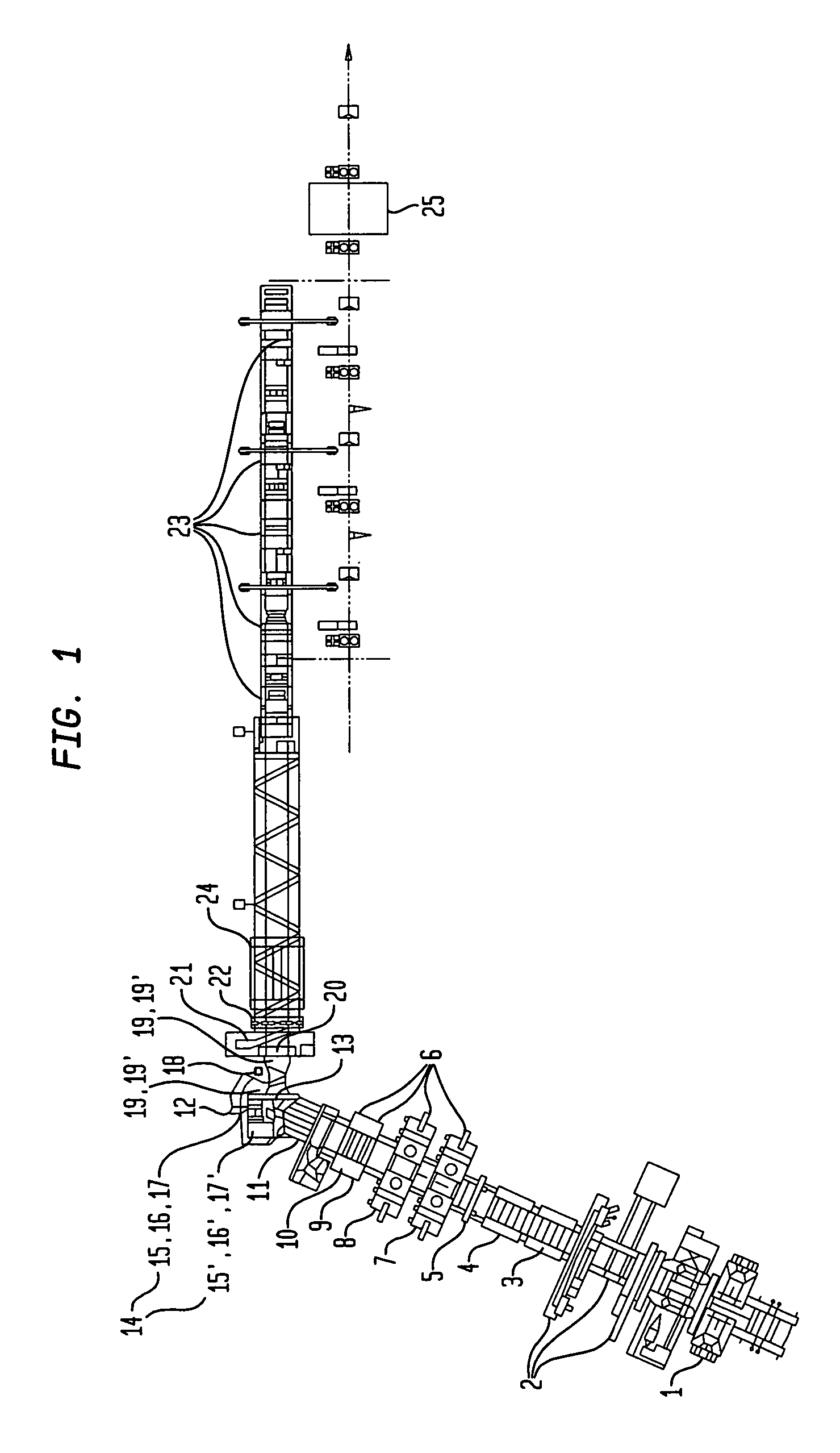Method and apparatus for making welded large pipes
a technology for welded pipes and pipes, applied in the field of methods and apparatus for making welded large pipes, can solve the problems of time-consuming and costly pipe transportation, and inability to meet the needs of customers, and achieve the effect of preventing edge offset, preventing roof formation, and good, destruction-free and inspection-free surface contour of welded seams
- Summary
- Abstract
- Description
- Claims
- Application Information
AI Technical Summary
Benefits of technology
Problems solved by technology
Method used
Image
Examples
Embodiment Construction
[0067]Throughout all the FIGS., same or corresponding elements are generally indicated by same reference numerals. These depicted embodiments are to be understood as illustrative of the invention and not as limiting in any way. It should also be understood that the drawings are not necessarily to scale and that the embodiments are sometimes illustrated by graphic symbols, phantom lines, diagrammatic representations and fragmentary views. In certain instances, details which are not necessary for an understanding of the present invention or which render other details difficult to perceive may have been omitted.
[0068]Turning now to the drawing, and in particular to FIG. 1, there is shown a schematic illustration of a layout of a plant design of an apparatus for making a machine-ready large pipe, in accordance with the present invention. A hot strip wound to a coil upon a coiler 1 pays out from the coiler 1 and has a leading end which is advanced to a welding machine 2 for welding to th...
PUM
| Property | Measurement | Unit |
|---|---|---|
| thicknesses | aaaaa | aaaaa |
| diameter | aaaaa | aaaaa |
| flatness | aaaaa | aaaaa |
Abstract
Description
Claims
Application Information
 Login to View More
Login to View More - R&D
- Intellectual Property
- Life Sciences
- Materials
- Tech Scout
- Unparalleled Data Quality
- Higher Quality Content
- 60% Fewer Hallucinations
Browse by: Latest US Patents, China's latest patents, Technical Efficacy Thesaurus, Application Domain, Technology Topic, Popular Technical Reports.
© 2025 PatSnap. All rights reserved.Legal|Privacy policy|Modern Slavery Act Transparency Statement|Sitemap|About US| Contact US: help@patsnap.com



